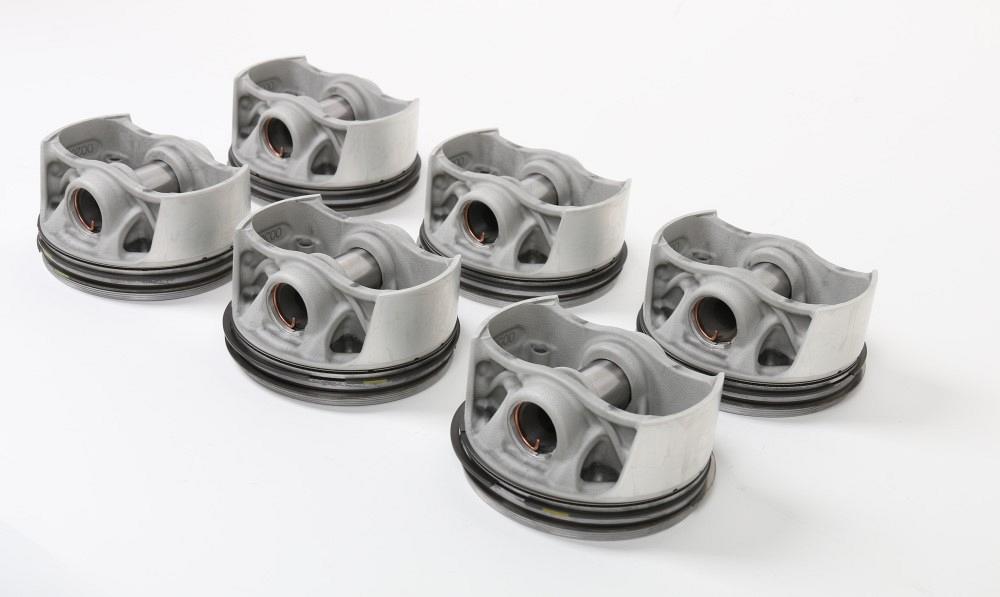- FMA
- The Fabricator
- FABTECH
- Canadian Metalworking
Our Publications
Categories
- Additive Manufacturing
- Aluminum Welding
- Arc Welding
- Assembly and Joining
- Automation and Robotics
- Bending and Forming
- Consumables
- Cutting and Weld Prep
- Electric Vehicles
- En Español
- Finishing
- Hydroforming
- Laser Cutting
- Laser Welding
- Machining
- Manufacturing Software
- Materials Handling
- Metals/Materials
- Oxyfuel Cutting
- Plasma Cutting
- Power Tools
- Punching and Other Holemaking
- Roll Forming
- Safety
- Sawing
- Shearing
- Shop Management
- Testing and Measuring
- Tube and Pipe Fabrication
- Tube and Pipe Production
- Waterjet Cutting
Industry Directory
Webcasts
Podcasts
FAB 40
Advertise
Subscribe
Account Login
Search
Mahle produces high-performance aluminum pistons using 3D printing
- July 27, 2020
- News Release
- Additive Manufacturing
As part of a cooperation with sports car manufacturer Porsche and mechanical engineering company TRUMPF, Mahle has produced high-performance aluminum pistons using 3D printing techniques for the first time. The pistons were successfully tested on the engine test bench for Porsche’s 911 GT2 RS sports car.
Whereas standard forged pistons have reached the limits of their performance potential, the power of the 700-HP Porsche engine could be boosted by 30 HP with an associated increase in efficiency from the aluminum pistons, according to the company.
“The results of the project confirm the great potential of 3D printing,” said Dr. Martin Berger, head of corporate research and advanced engineering at Mahle.
Steffen Rübling, project manager at TRUMPF, said the project illustrates how 3D printing can be used to continue to improve components whose performance potential has already been exhausted by decades of development.
The new process presents the option of implementing a so-called bionic design. In this approach, which mimics natural structures such as the human skeleton, material is added only in loaded areas, with the structure of the piston being adapted to the load. It saves material and has the potential to make the 3D-printed piston up to 20% lighter than its conventionally manufactured counterpart while increasing rigidity.
In addition, the developers at Mahle have introduced an optimally positioned and specially shaped cooling gallery near the piston rings. This design is only possible using 3D printing.
The new production process is based on an aluminum alloy developed by Mahle with a long history of successful use in cast pistons. The alloy is atomized into a fine powder and then printed in a process known as laser metal fusion. A laser beam melts the powder to the desired layer thickness, and a new layer is applied on top, thereby building the piston up one layer at a time. Using this method, TRUMPF produces piston blanks made of about 1,200 layers in around 12 hours.
The piston blank then is finished, measured, and tested at Mahle and must meet the same strict standards as a conventionally manufactured part. Special attention is paid to the central area of the piston—known as the skirt—and the point at which it connects with the conrod—the pin bore. These areas are subjected to skirt pulsing and tear-off tests; Mahle’s engineers can thus simulate the loads that will occur during future operation.
Related Companies
- Podcasting
- Podcast:
- The Fabricator Podcast
- Published:
- 04/16/2024
- Running Time:
- 63:29
In this episode of The Fabricator Podcast, Caleb Chamberlain, co-founder and CEO of OSH Cut, discusses his company’s...
- Trending Articles
- Industry Events
16th Annual Safety Conference
- April 30 - May 1, 2024
- Elgin,
Pipe and Tube Conference
- May 21 - 22, 2024
- Omaha, NE
World-Class Roll Forming Workshop
- June 5 - 6, 2024
- Louisville, KY
Advanced Laser Application Workshop
- June 25 - 27, 2024
- Novi, MI

























